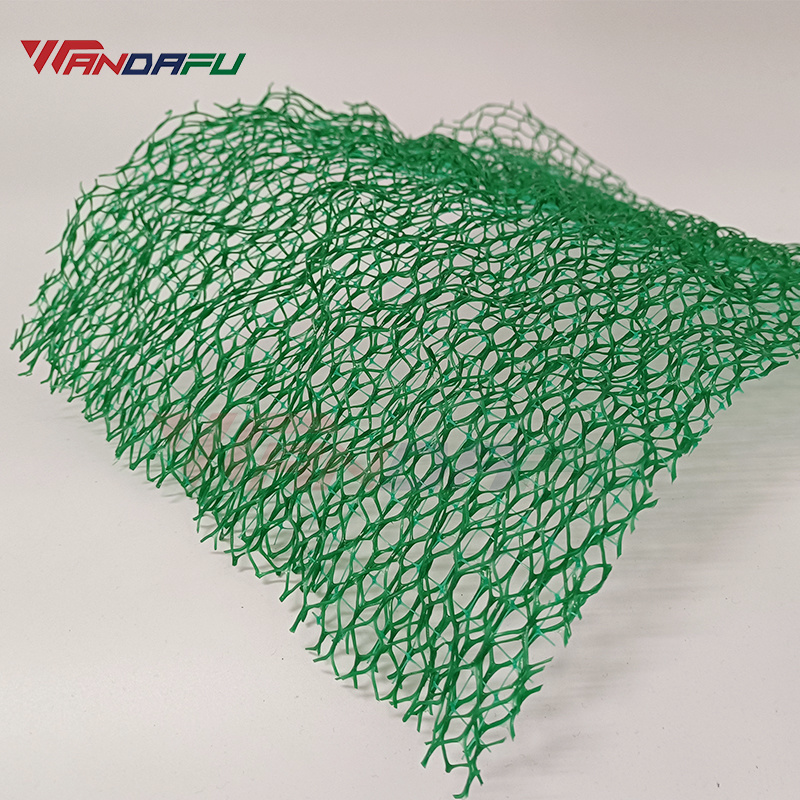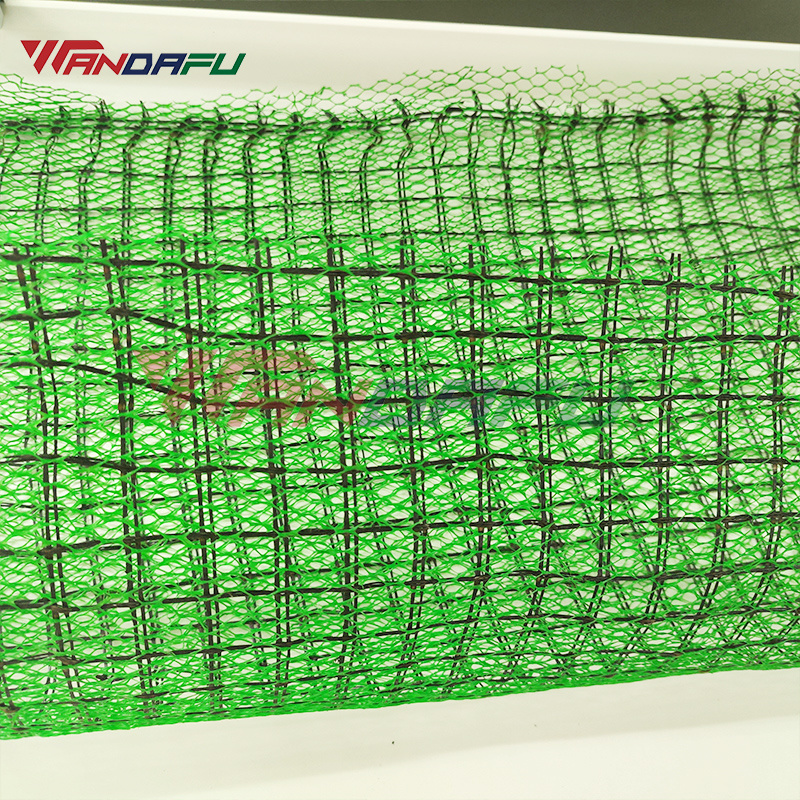
What is 3d GeoMat for Soil Stabilization Slope Protection Erosion Control?
Release time:
2025-05-17
3D GeoMat represents a revolutionary advancement in slope protection and erosion control solutions. This three-dimensional geosynthetic material, resembling an erosion-control carpet, serves as a durable foundation enhancer that effectively mitigates landslide risks and erosion damage. Engineered from high-performance polymer fibers, 3D geomats address critical challenges in construction projects and infrastructure maintenance with remarkable efficiency.
3D GeoMat represents a revolutionary advancement in slope protection and erosion control solutions. This three-dimensional geosynthetic material, resembling an erosion-control carpet, serves as a durable foundation enhancer that effectively mitigates landslide risks and erosion damage. Engineered from high-performance polymer fibers, 3D geomats address critical challenges in construction projects and infrastructure maintenance with remarkable efficiency.

Unlike traditional erosion control methods, these innovative mats feature an open structure that simultaneously protects vulnerable surfaces while encouraging natural vegetation growth. For optimal slope stabilization, professionals often combine 3D geomats with complementary geosynthetics like geogrids and geotextiles - creating comprehensive protection systems that require no specialized equipment or technical expertise for installation.
Key Benefits of 3D Erosion Control Mats
Multi-Functional Protection System
-
Soil stabilization: Maintains structural integrity on slopes up to 45 degrees
-
Advanced erosion control: Reduces soil loss by up to 90% compared to unprotected surfaces
-
Linear protection: Ideal for channels, embankments, and shoreline applications
-
Ecological restoration: Promotes vegetation growth while providing immediate protection
-
Specialized applications: Includes fire-resistant variants for firefighting zones and permeable types for continuous drainage
Engineering Advantages
✓ Immediate surface protection during vegetation establishment
✓ Slope reinforcement for both cut and fill applications
✓ Synergistic performance when combined with other geosynthetics
✓ Damaged vegetation recovery in post-construction areas
✓ Comprehensive defense against erosion, landslides, and weathering
Technical Specifications & Performance Data
Structural Characteristics
-
90%+ porosity rate enables robust ecosystem development
-
Thermally-bonded geotextile layers provide triple-function protection (filtration/separation/core stability)
-
Hexagonal wire mesh integration enhances tensile strength without material overlap
-
Lightweight polyamide construction (0.9-1.2 kg/m²) simplifies installation in wet/dry conditions

Performance Metrics
| Parameter | Value | Benefit |
|---|---|---|
| Flow Rate | 0.5-2.5 m/s | Withstands flash flooding conditions |
| Vegetation Coverage | 80%+ | Achieves 6 m/s erosion resistance |
| Soil Retention | 95%+ | Superior to conventional methods |
| Service Life | 15-25 years | Long-term cost efficiency |
Installation Guidelines & Best Practices
Site Preparation
-
Slope assessment: Evaluate gradient, soil type, and hydrological conditions
-
Surface preparation: Remove debris and grade to desired contours
-
Anchor trench excavation: Create 30-50cm deep perimeter trench
Mat Installation
-
Unroll mats perpendicular to water flow direction
-
Secure with staples (20-30 staples per square meter)
-
Overlap edges 10-15cm for continuous protection
-
Backfill anchor trenches with compacted soil
Vegetation Establishment
-
Hydraulic seeding: Most efficient application method
-
Native species selection: Choose deep-rooted plants for enhanced stability
-
Initial watering: Maintain moisture for 4-6 weeks until establishment
Comparative Analysis: 3D Geomat vs Traditional Methods
Concrete Solutions
-
Higher installation costs (40-60% more)
-
Poor ecological integration
-
Limited permeability increases hydrostatic pressure
Rock Armoring
-
Significant material transport costs
-
Maintenance challenges
-
Lower aesthetic value
3D Geomat Advantages
✅ 60% faster installation
✅ 75% cost reduction over 10-year lifecycle
✅ Seamless ecological integration
✅ Adaptive to settlement and ground movement
Industry Applications & Case Studies
Transportation Infrastructure
-
Highway embankments: Reduced maintenance frequency by 80% in Colorado DOT projects
-
Railway cuttings: 92% erosion reduction on Amtrak Northeast Corridor
Water Management
-
Channel lining: Withstood 5-year flood events in Mississippi River tributaries
-
Dam faces: Successful application on 1:1.5 slopes at Hoover Dam auxiliary sites
Mining & Rehabilitation
-
Tailings dams: Achieved 95% vegetation cover within 12 months in Chilean copper mines
-
Quarry restoration: Slope stabilization on 70-degree faces in Pennsylvania slate operations
Maintenance & Long-Term Performance
Monitoring Protocol
-
Quarterly inspections for first two years
-
Vegetation health checks (minimum 70% coverage target)
-
Anchorage verification after major storm events
Remedial Measures
-
Spot reseeding for bare patches >1m²
-
Additional stapling if mat lifting occurs
-
Sediment removal from drainage pathways
FAQs: Professional Insights
Q: How steep of a slope can 3D geomats protect?
A: Properly installed systems stabilize slopes up to 1:1 (45°) with vegetation, or 1:0.5 (63°) when combined with geogrids.
Q: What's the typical project lifespan?
A: High-quality HDPE mats maintain functionality for 20+ years, with UV-stabilized versions lasting 25-30 years.
Q: Can mats be installed underwater?
A: Yes, specially weighted mats (1.5-2.5kg/m²) are designed for aquatic applications with proper anchoring.
Q: How soon does vegetation establish?
A: Initial growth appears in 2-4 weeks, with full stabilization achieved in 12-18 months depending on climate.
Conclusion: Why Choose 3D Geomat Solutions?
Modern 3D erosion control mats represent the optimal balance between engineering performance and ecological sustainability. With proven results across diverse applications - from transportation corridors to mining reclamation - these systems deliver:
-
Immediate erosion protection during critical establishment periods
-
Long-term cost savings through reduced maintenance
-
Environmental compliance with current regulations
-
Aesthetic enhancement of project sites
-
Adaptability to challenging site conditions
For project-specific recommendations, consult with geotechnical engineers to select the optimal mat configuration based on your slope gradient, soil characteristics, and hydraulic conditions. Many manufacturers offer free technical support and design assistance for qualified projects.
Latest News



